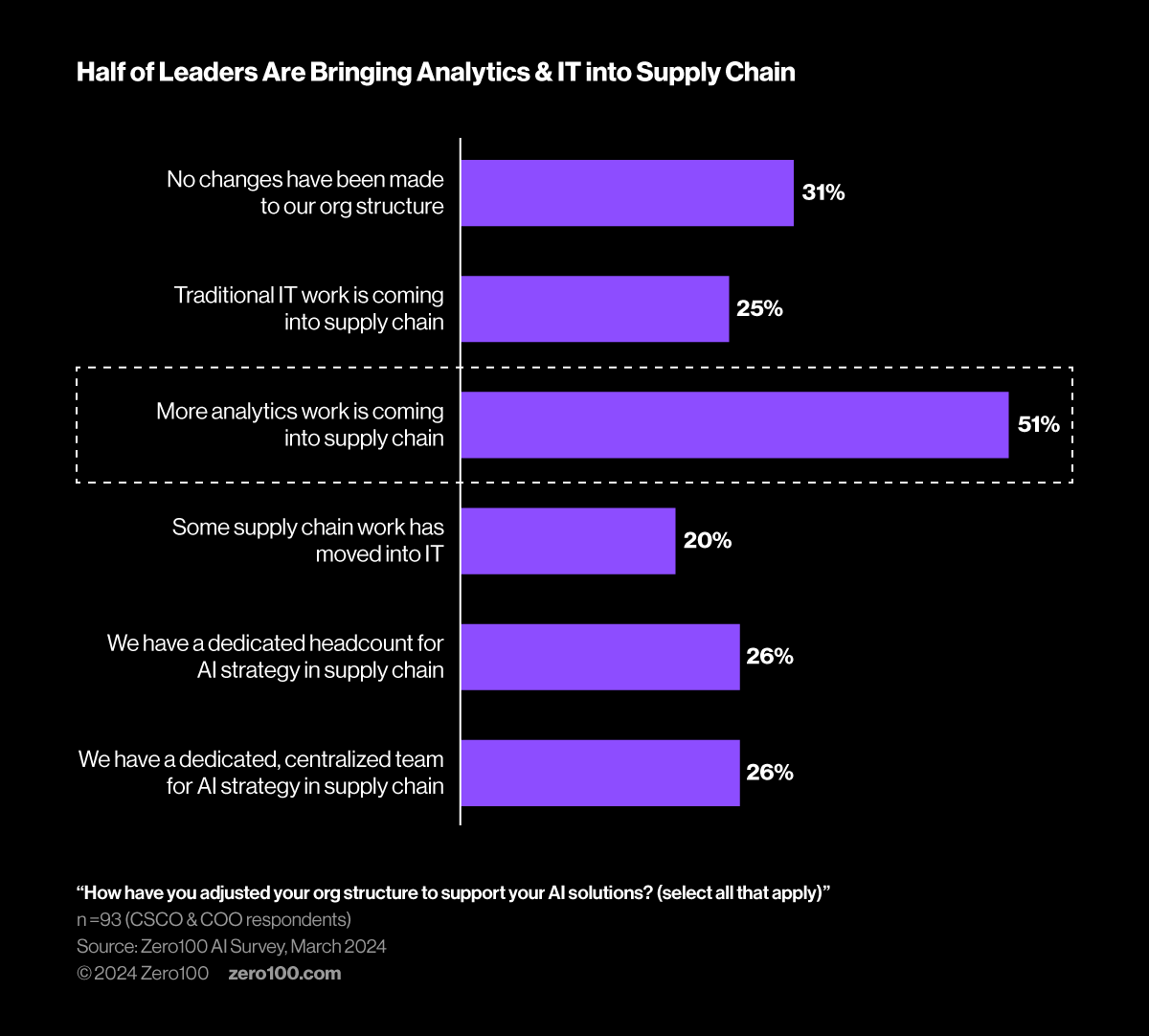

51% of Leaders Are Bringing IT and Analytics into Supply Chain. Is It Time to Follow Suit?
Mastering AI integration relies on bringing tech roles in supply chain, which more than half of CSCOs and COOs are currently doing. In this Insight, we delve into case studies and recommendations, getting into the details of restructuring, internal alignment, leveraging tech expertise – and the fact that all of this corresponds with employee desire.
Key Takeaways
-
1
When asked about their approach to supporting AI solutions through organizational design, 51% of the CSCOs and COOs surveyed stated that they are observing an increase in analytics work within the supply chain, though 31% indicated that they haven’t made any changes to their organizational structure.
-
2
Despite the fact that 80% of employees say they want to acquire new skills, only 38% of US executives have concrete plans to address this growing demand for upskilling and reskilling, according to a 2024 LinkedIn study about AI.
The integration of AI and ML into organizations is rapidly transforming the business landscape, with our research showing that the stakes are high: the top quartile of AI performers grew revenue nearly twice as fast as the bottom quartile group and did so at a +1.5% higher gross profit. With any digital transformation, alignment across key players is essential to success – but in the case of AI/ML models, which are more data-sensitive than traditional software, closer and more continuous collaboration between business and IT functions is particularly critical. MLOps can help ensure alignment, but an organizational shift – one that ensures strong connective tissue between tech roles and supply chain roles – is another crucial part of the solve. In a Zero100 survey, 51% of CSCO/COO respondents revealed that they are bringing IT and analytics work into supply chain to support AI solutions.
One of the ways companies are updating their organizational models to pave the way for AI is with hub-and-spoke models. Schneider Electric, for example, has created a central organization – or a “hub” – of tech talent, which serves as an enabler, providing supply chain teams with the technical expertise they need to successfully implement AI use cases.
Despite the majority of companies considering restructuring options like the above, though, 31% report that they haven’t made any changes to their org structure at all.

We predict the outcome of such restructuring is increased internal alignment, cohesion, and the ability to leverage technical expertise more efficiently and effectively within business – but also that it will lead to happier and more productive employees. According to a 2024 LinkedIn study about AI for professionals, an overwhelming 80% of employees said they want to acquire new skills. However, the same study reveals that only 38% of US executives have concrete plans to address this growing demand for upskilling and reskilling. Bridging the gap between employee aspirations and organizational initiatives is crucial to fostering a workforce equipped with the necessary skills for the AI-driven future.
Intuit is one company exemplifying a proactive approach to workforce development in the age of AI. Embracing the ethos of continuous learning and reinvention, its reskilling program is aimed at empowering employees to seamlessly transition between roles. By offering a spectrum of learning pathways, ranging from basic literacy in AI to comprehensive apprenticeships, the company ensures that individuals at every level can adapt to the evolving technological landscape. Intuit’s chief data officer, Ashok Srivastava, says that while employees must have the right credentials to move into more tech-heavy roles, he strongly believes in people’s ability to reinvent themselves and reskill.
Based on these insights, our recommendations for organizations aiming to thrive in the AI era are:
- Align Recruitment with Skills Needs: Connect recruitment efforts with the skills required for AI integration, attracting talent by emphasizing the role of AI in supply chain management.
- Enhance Organizational Integration: Evaluate the ease of internal mobility for employees with dynamic skill sets, fostering a culture of collaboration and problem-solving across departments.
- Invest in Adoption Systems: Implement reward systems and development pathways to incentivize and support early adopters of AI technologies, promoting a culture of innovation and continuous learning.
The shift is underway and happening fast – consider the practical steps you can take today, tomorrow, and next week to set a strong foundation of strategic alignment, communication, and collaboration within your organization. In this time of change, focusing on your employees – those you have and those you need – is the first step toward seeing ROI.
To see a different data cut or to dig deeper into this topic, reach out to our Head of Research Analytics, Cody Stack, at Cody.Stack@zero100.com.
Methodology
Zero100’s proprietary data and analytics are a combined effort between our data scientists and research analysts. We provide data-first insights matched with our own research-backed points of view and bring this analysis to life via real-world case examples being led by supply chain practitioners today.
For this study, we looked at 4.16 million LinkedIn job posts from 241 B2B and B2C companies. Our analysis categorizes listings based on mentions of specific digital skills within job titles and descriptions. We also surveyed 93 CSCOs and COOs. Respondents include supply chain professionals from companies with an average company revenue of over $1 billion across all functions and all regions.